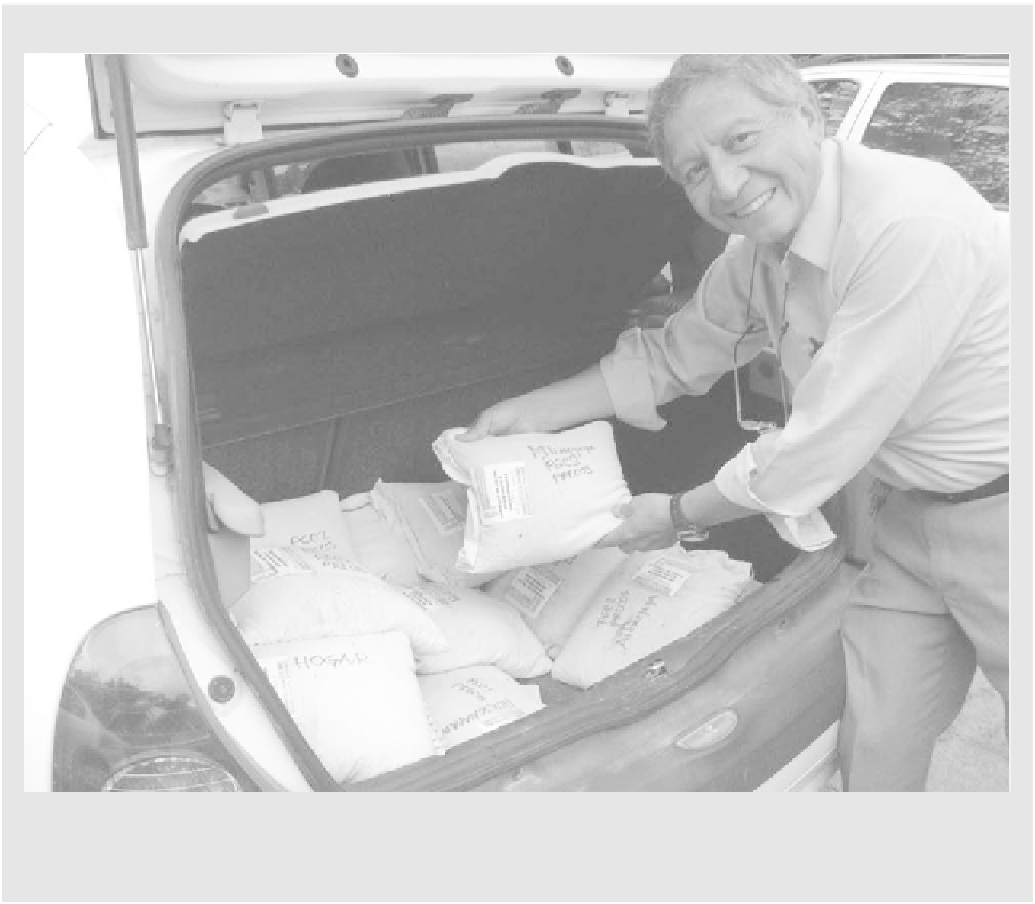Agriculture Reference
In-Depth Information
FIGURE 14.10
Dr. Roberto García-Espinosa, with seeds of some of the horizontally resistant beans he has bred.
Lacking
funds for distributing the seeds to farmers, he does the job himself from the back of his car. (Photo courtesy of Dr. Don Lotter.)
promote more effective and equitable conservation. The
organization Native Seeds/SEARCH in Tucson, Arizona,
for example, complements its
ex situ
seed collection and
storage activities by encouraging farmers to grow local
and traditional varieties of crops. The organization pro-
vides seeds for farmers who have lost varieties, and then
purchases the farmers' excess production. The farmers'
own fields, then, become the sites for both the retention
of traditional genetic resources as well as the screening
grounds for the varieties of the future. When these fields
also use local knowledge, local resources, and limited
industrial inputs, breeding for sustainability can take place
(Tuxill and Nabhan, 2001).
Locally important, minor, or underutilized crops, as well as
a range of noncrop species with potential as new crops, all
form part of the genetic resources available for breeding
programs for sustainable agriculture. They also form part
of the whole-system, horizontal resistance process that is
essential for maintaining a genetic basis for sustainable
agricultural systems. It is important, therefore, to extend
genetic conservation efforts to include all these other types
of crop, noncrop, and wild-relative species. This goal is best
achieved by preserving the traditional agroecosystems in
which these species occur (Altieri and Nicholls, 2004a).
V
ALUING
G
ENETIC
D
IVERSITY
IN
L
IVESTOCK
Genetic diversity in livestock is valuable for the same
reasons as genetic diversity in crops: a diversity of breeds
(and diversity within a breed) gives farmers the raw
material for selecting stocks or developing new breeds in
response to environmental changes, new disease threats,
P
RESERVING
M
INOR
C
ROPS
AND
N
ONCROP
R
ESOURCES
Genetic resources in agroecosystems extend beyond the
relatively few crop species that today provide the bulk of
the food consumed by much of the human population.

Search WWH ::

Custom Search